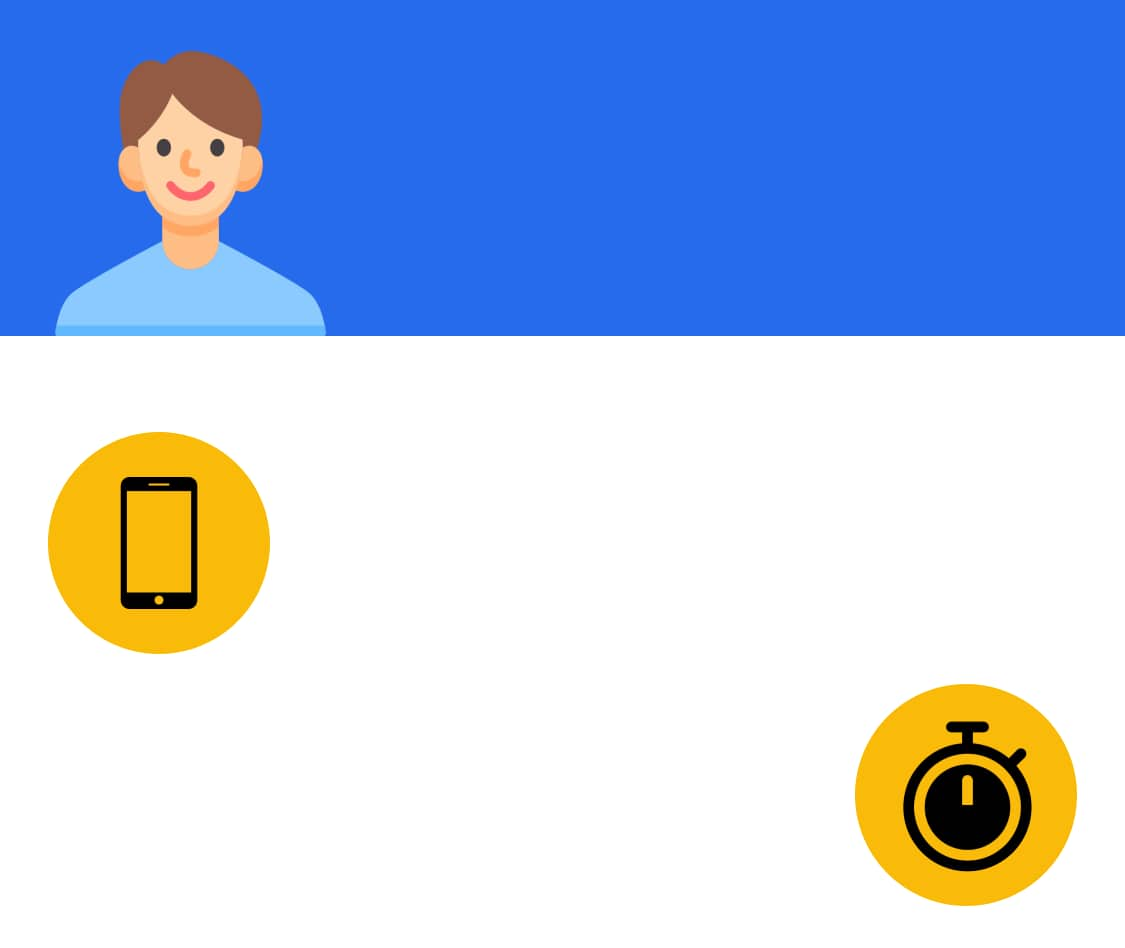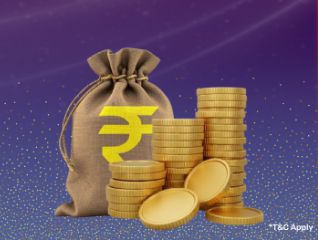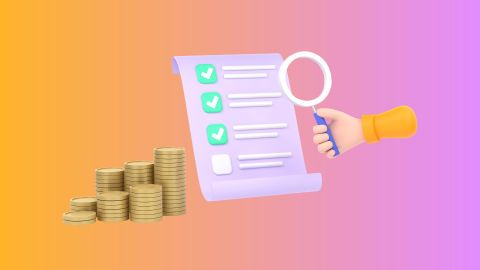Input tax credit (ITC) is one of the key features of the Goods and Services Tax (GST) regime. It aims to eliminate the cascading effect of taxes and reduces the cost of doing business.
What is input tax credit (ITC) under GST with example?
Input Tax Credit (ITC) is the tax a business pays on its purchases, which it can claim back to lower the tax it owes when it sells products or services. Essentially, businesses can offset the GST they've paid on purchases against the GST they collect on sales. Since GST is an integrated tax system, every business transaction is interconnected, ensuring that the credit flows smoothly across the entire supply chain.
For example, if you are a manufacturer,
You've paid Rs. 10,000 in input tax on product purchases
You've collected Rs. 25,000 in output tax on product sales
Consequently, your net tax payable amounts to Rs. 15,000 (calculated as Output Tax Collected minus Input Tax Credit).
How does input tax credit work under GST?
Under the Goods and Services Tax (GST) regime, Input Tax Credit (ITC) plays a pivotal role in streamlining tax payments and reducing cascading effects. Here's how Input Tax Credit works:
Tax Liability |
Input Tax Credit Available |
To Pay IGST |
IGST, CGST & SGST on purchases |
To Pay SGST |
SGST & IGST on purchases |
To Pay CGST |
CGST & IGST on purchases |
Suppose Mr. A sells goods to Mr. B. and Mr. B, as the buyer, can claim credit on purchases based on invoices.
Eligible and ineligible input tax credit
Not all input tax credits are eligible for claim under GST. Some input tax credits are specifically blocked or restricted by the GST law.
Here are some examples of ineligible input tax credits:
GST paid on motor vehicles and other conveyances. Except when used for specified purposes such as transportation of goods, passengers, or for imparting training.
GST paid on food and beverages, outdoor catering, beauty treatment, health services, cosmetic and plastic surgery. Except when used for making an outward taxable supply of the same category or as a part of a mixed or composite supply.
GST paid on membership fees for a club, health, and fitness centre.
GST paid on travel benefits extended to employees on vacation such as leave or home travel concession.
GST paid on goods or services received by a non-resident taxable person, except for those on which interstate goods and Service tax (IGST) is payable.
GST paid on goods or services used for personal consumption by the registered person or their employees.
GST paid on goods lost, stolen, destroyed, written off, or disposed of by way of gift or free samples.
Who can claim input tax credit under GST?
Any registered person can avail credit of tax paid on the inward supply of goods or services or both, subject to certain conditions. To check your eligibility and understand the claiming process, you can use the GST Calculator.
- Possession of tax invoice: The registered person must possess a valid tax invoice or any other specified tax-paying document to claim the credit.
- Receipt of goods or services: The credit can be availed only after the registered person has received the goods or services, including scenarios where the billing and shipping addresses differ.
- Actual payment of tax: The tax amount must have been paid by the supplier for the credit to be eligible for the recipient.
- Furnishing of return: The registered person should have furnished the necessary return to claim the input tax credit.
- Lot-based eligibility: If the inputs are received in lots, the credit can be claimed only when the final lot of inputs is received.
- Timely payment to supplier: The recipient must pay the supplier the value of goods or services along with the tax within 180 days from the invoice date. Failure to do so will add the credit amount to the recipient's output tax liability with interest. However, once payment is made, the recipient can claim the credit again. In cases of part payment, proportionate credit will be allowed.
What can be claimed as ITC?
Input Tax Credit (ITC) is applicable solely for business-related expenses. It cannot be claimed for goods or services that are used exclusively for the following purposes:
- Personal use: Any goods or services utilised for personal needs, rather than for the business, are not eligible for ITC claims.
- Exempt supplies: ITC cannot be claimed on items that fall under exempt supplies, as these goods or services are outside the scope of GST.
- Specific exclusions: Certain goods or services have been expressly excluded from ITC eligibility. These exclusions are clearly outlined in the GST regulations and must be adhered to by businesses.
ITC is meant to streamline tax credits for business purposes, ensuring it isn’t misused for personal or ineligible supplies.
Input tax credit on capital goods
Input tax credit (ITC) on capital goods is a benefit available to taxpayers under the GST regime. It allows them to claim the GST paid on the purchase or import of capital goods, such as machinery, equipment, vehicles, etc., that are used for business purposes. However, there are certain conditions and restrictions for availing ITC on capital goods, such as:
The capital goods must be capitalised in the books of accounts and not treated as business expenses.
The tax component of the capital goods must not be claimed as depreciation under the Income Tax Act 1961.
The ITC on capital goods must be reduced by 5% per quarter from the date of invoice, assuming a life span of five years.
The ITC on capital goods cannot be claimed if they are used exclusively for exempt supplies or personal use.
These rules are meant to ensure that the ITC on capital goods is claimed only to the extent of their use in taxable supplies and in furtherance of business.
ITC on job work
In a scenario where a principal manufacturer sends goods for further processing to a job worker, such as a shoe manufacturing company sending half-made shoes to have soles fitted, the principal manufacturer can claim credit for the tax paid on the purchase of these goods sent for job work.
ITC on transfer of business
This provision applies in cases of amalgamations, mergers, or transfer of business. In such instances, the transferor will have available Input Tax Credit (ITC), which will be transferred to the transferee at the time of the transfer of business.
Common credit in ITC
A company may purchase capital goods, input materials, and services from external sources. These items and services can be used for both private and business purposes. Under GST, businesses can claim the total input tax credit on all such purchases as Proportionate Credit or Common Credit. However, the taxpayer cannot claim credit for inputs used for personal purposes. Therefore, the standard credit should be applied when paying the production tax liability.
The standard credit can be used under these conditions:
ITC can only be claimed for business purposes, not for personal use of goods and services
ITC is only available for selling taxable goods and services
ITC does not apply to exempted supplies
Conditions to claim an input tax credit under GST
As per Section 16 of the CGST Act, registered persons are entitled to claim input tax credit (ITC) for goods or services used in their business. Here is a quick view of the conditions to claim an input tax credit under GST:
To claim ITC, a registered person (buyer) must:
Possess a valid tax invoice or debit note issued by a registered supplier.
Receive the goods or services.
Ensure that the tax charged on the supply has been paid to the government, either in cash or through the utilisation of admissible input tax credit.
Furnish the GST returns.
ITC can be claimed upon receiving the last lot or instalment of goods, if received in lots or instalments.
If a recipient fails to pay the supplier within 180 days from the invoice date, the amount equal to the ITC availed shall be added to the recipient's output tax liability, along with interest.
ITC is not allowed if depreciation has been claimed on the tax component of capital goods under the provisions of the Income Tax Act, 1961.
No ITC is allowed after the due date of filing the GST returns as per the time limit set by GST provisions.
Common ITC used for exempt/taxable supplies or business/non-business activities must be identified and split accordingly.
Certain items are ineligible for ITC claims under Section 17(5) of the CGST Act, termed as blocked credits.
Time limit to claim input tax credit under GST
The time limit to claim input tax credit under GST is earlier of the following two dates:
The due date of filing the annual return for that financial year; or
The date of filing the monthly return for September of the next financial year.
For example, if a registered person wants to claim an input tax credit for the financial year 2022-23. They must do so before filing the monthly return for September 2023 or filing the annual return for 2022-23, whichever is earlier.
How to calculate input tax credit (ITC)?
To calculate ITC, follow these steps:
Add up the GST paid on all purchases during the relevant tax period
Identify which inputs qualify for ITC
Calculate the total ITC by multiplying the eligible GST paid on purchases by the input percentage
Subtract the calculated ITC from the GST payable on sales for that tax period
How to claim an input tax credit under GST?
To claim input tax credit under GST, you must follow these steps:
- File a monthly return in form GSTR-3B and declare your output tax liability and input tax credit details.
- Verify the input tax credit details in form GSTR-2B, which is an auto-drafted statement based on the returns filed by your suppliers.
- Reconcile any discrepancies between the claimed input tax credit and form GSTR-2B and rectify them in the next month’s return.
- Ensure that you pay any excess input tax credit claimed along with interest and penalty if applicable.
Input tax credit helps in reducing the tax burden on businesses and ensures a seamless flow of credit in the GST system. By following the rules and procedures for claiming input tax credit, you can avail the benefits of GST and improve your cash flow and profitability.
Claiming ITC with an example
Regular taxpayers are mandated to report input tax credit (ITC) in their monthly GST returns using Form GSTR-3B, particularly in Table 4, which necessitates the inclusion of eligible ITC, ineligible ITC, and ITC reversed during the tax period. Taxpayers can only claim ITC if it reflects in their GSTR-2B, highlighting the importance of matching the purchase register with the GSTR-2B for accurate ITC claims. For example, if a taxpayer has eligible ITC of Rs. 1,000 and ineligible ITC of Rs. 200 in a given tax period, they must report these figures accurately in Table 4 of Form GSTR-3B to comply with GST regulations and ensure proper tax credit utilisation.
ITC reconciliation
The input tax credit (ITC) claimed by a person must align with the details provided by their supplier in their GST return. If there's any discrepancy, both the supplier and recipient will be notified of the discrepancies after filing the GSTR-3B. To understand how to reconcile such discrepancies, refer to our article on GSTR-2A Reconciliation.
For a comprehensive understanding of the reasons for ITC mismatches and the process to apply for re-claiming ITC, please read our detailed article on the topic.
Tips for effective ITC reconciliation
1. Start early: Commencing the reconciliation process ahead of time provides ample opportunity for a comprehensive review and allows for any necessary corrections to be made.
2. Maintain accurate records: Keeping detailed and organised documentation will facilitate the reconciliation process and ensure precision throughout.
3. Reconcile regularly: Conducting frequent checks will help you detect any discrepancies promptly.
4. Utilise automation: Employing automation can improve efficiency, minimise manual errors, and streamline the process of data comparison.
5. Seek Professional Assistance: If you encounter uncertainty or complexity in your transactions, do not hesitate to consult a tax professional for guidance.
Process overview
Invoice recording: Sellers like Mr. A record tax invoices in their GSTR-1.
Auto-population: The details of purchases by Mr. B from Mr. A are reflected in GSTR-2A or GSTR-2B.
Acceptance: Mr. B verifies and accepts the purchase details in GSTR-2, confirming the accuracy of seller-reported data.
Credit allocation: The tax amount on purchases is credited to Mr. B's Electronic Credit Ledger.
Adjustment and refund: Mr. B can utilize this credit against future tax liabilities, thus reducing the amount payable. Excess credit can be claimed as a refund.
GST rules to claim input tax credit
Businesses need to follow certain rules for ITC claims. These rules are:
The buyer should have a valid debit note, tax invoice, or another prescribed document issued by the supplier
The buyer should have received the goods or services. If the product is received in installments, the credit should be claimed after receiving the last installment
General insurance, maintenance, and repair for aircraft, motor vehicles, and vessels
The supplier should have paid the due tax to the government for the recipient to claim input tax credit
Motor vehicles for transporting people with a seating capacity of more than 13, including the driver, aircraft, vessels, and money for, or by, a financial institution or banking company
The supplier should have filed GST returns. GST rules allow you to claim input tax credit on purchases you make, but this is only allowed if the supplier is compliant with GST norms and has paid the tax collected from buyers
To claim ITC, the buyer should pay for the purchase, including tax, within 180 days of the invoice being issued. If the buyer fails to do so, the amount of credit claimed will be added to their output tax liability. After the taxpayer pays the amount due to the supplier, they can claim ITC
ITC on debit notes and invoices issued by the supplier, where the details for such debit notes and invoices are reflected in GSTR 2B
Reversal of input tax credit
Input tax credit (ITC) can only be claimed for goods and services used for business purposes. It cannot be claimed for non-business (personal) purposes or for making exempt supplies. Additionally, there are certain situations where ITC will be reversed:
Non-payment of invoices within 180 days: ITC will be reversed for invoices that remain unpaid beyond 180 days from the date of issue.
Credit note issued to Input Service Distributor (ISD) by seller: If a credit note is issued by the seller to the Input Service Distributor, the ITC that was reduced subsequently will be reversed.
Inputs used partly for business and partly for exempted supplies or personal use: In cases where inputs are used for both business and non-business (personal) purposes, the portion of ITC used for personal purposes must be reversed proportionately.
Capital goods used partly for business and partly for exempted supplies or personal use: Similar to the above situation, if capital goods are used for both business and non-business (personal) purposes, the ITC must be reversed proportionately.
Insufficient reversal of ITC: After the annual return is filed, if the total ITC on inputs for exempted/non-business purposes exceeds the ITC reversed during the year, the difference amount will be added to the output liability, with interest applicable.
Details of the reversal of ITC are to be provided in the GSTR-3B. For a deeper understanding of how ITC is segregated into business and personal use and subsequent calculations, refer to our article on the topic.
Documents required for claiming ITC
To claim Input Tax Credit (ITC), the following documents are required:
Invoice issued by the supplier of goods/services
Debit note issued by the supplier to the recipient (if any)
Bill of entry
Invoice issued under specific circumstances, such as a bill of supply issued instead of a tax invoice if the amount is less than Rs 200, or when the reverse charge is applicable as per GST law
Invoice or credit note issued by the Input Service Distributor (ISD) in accordance with GST invoice rules
Bill of supply issued by the supplier of goods and services or both.
Items on which input tax credit (ITC) is not allowed
Input tax credit (ITC) is a mechanism under GST that allows a registered person to claim credit for the tax paid on the inward supplies of goods or services or both. However, ITC is not available for all items of expenditure. Some of the items on which ITC is not allowed are:
Motor vehicles and other conveyances, except when they are used for further supply, transportation of passengers, providing training, or transportation of goods.
Food and beverages, outdoor catering, beauty treatment, health services, cosmetic and plastic surgery. Except when they are used for making an outward taxable supply of the same category or as an element of a taxable composite or mixed supply.
Membership of a club, health, and fitness centre.
Rent-a-cab, life insurance, and health insurance, except when they are mandatory for an employer to provide to its employees under any law or when they are used for making an outward taxable supply of the same category or as an element of a taxable composite or mixed supply.
Travel benefits are extended to employees on vacation or home travel concession.
Works contract services when supplied for construction of an immovable property, except when it is an input service for further supply of works contract service.
Goods or services received by a taxable person for construction of an immovable property on their own account, other than plants and machinery.
Goods or services on which tax has been paid under a composition scheme.
Goods or services used for personal consumption.
Goods lost, stolen, destroyed, written off, or disposed of by way of gift or free samples.
Any tax paid due to short payment, excessive refund, fraud, suppression, misdeclaration, or confiscation.
Goods or services used for making exempt supplies.
Input Tax Credit (ITC) will be allowed under two circumstances:
When goods are sent to the job worker from the principal's place of business.
When goods are sent directly from the place of supply of the supplier of such goods to the job worker.
However, to be eligible for ITC, the goods sent must be received back by the principal within 1 year (3 years for capital goods).
Recent updates and changes in ITC rules
Businesses now have until November 30 to claim Input Tax Credit (ITC) for the previous financial year, an extension from the original deadline of September 30. Since January 1, 2022, businesses can only claim ITC based on an auto-generated statement from the GST portal, marking a significant departure from the previous two-way communication model.
The earlier provision allowing businesses to claim provisional ITC for unreported invoices has been eliminated. Consequently, claims must now depend solely on the auto-generated statement provided by the GST portal.
Additionally, the Central Goods and Services Tax (CGST) Act differentiates between ‘ITC availed’ (which refers to the eligibility to claim the credit) and ‘ITC utilised’ (which denotes the actual application of the credit). It is important to note that interest may be charged on any excess ITC claimed, highlighting the necessity for businesses to maintain accurate records and ensure compliance with the revised regulations. By understanding these changes and adhering to the deadlines, businesses can optimise their ITC claims and ensure proper utilisation of credits.
Input tax credit in GST
The input tax credit (ITC) mechanism is a benefit available to businesses registered under the GST Act, including manufacturers, suppliers, e-commerce operators, and others specified in the legislation. It allows them to claim a refund for the taxes paid on their purchases, effectively reducing their tax liability. For instance, if a manufacturer buys raw materials and pays a certain amount of tax on those purchases, they can deduct that tax amount from the tax they need to pay when selling their finished products. This mechanism encourages compliance and prevents double taxation, thereby streamlining the tax process for businesses across various sectors.






























